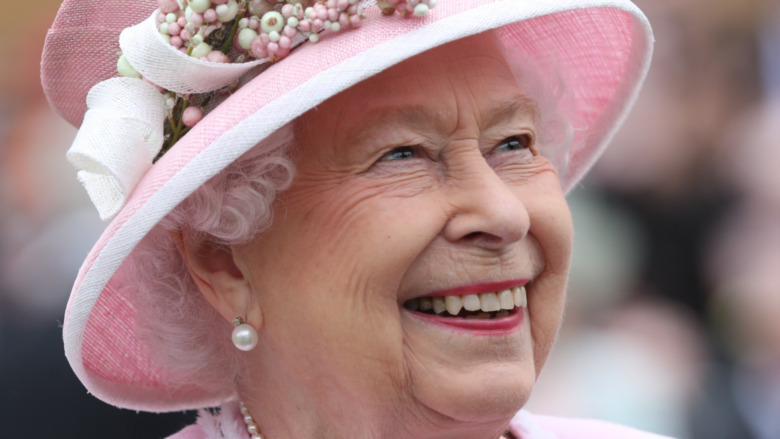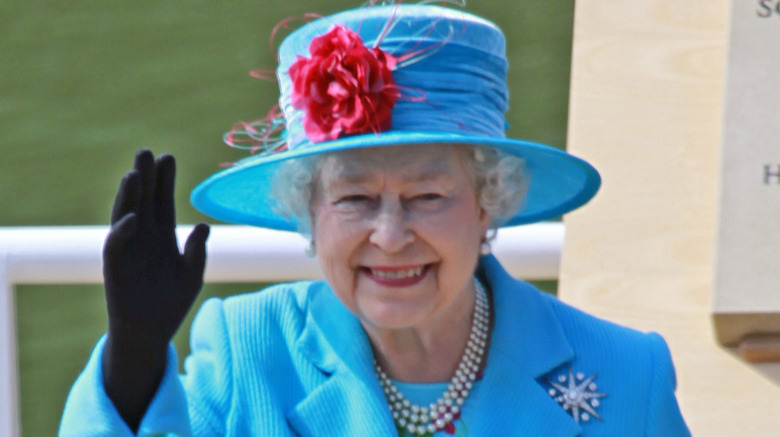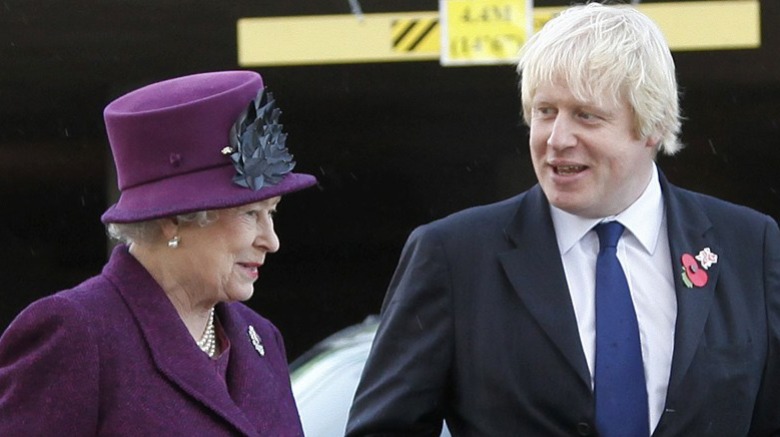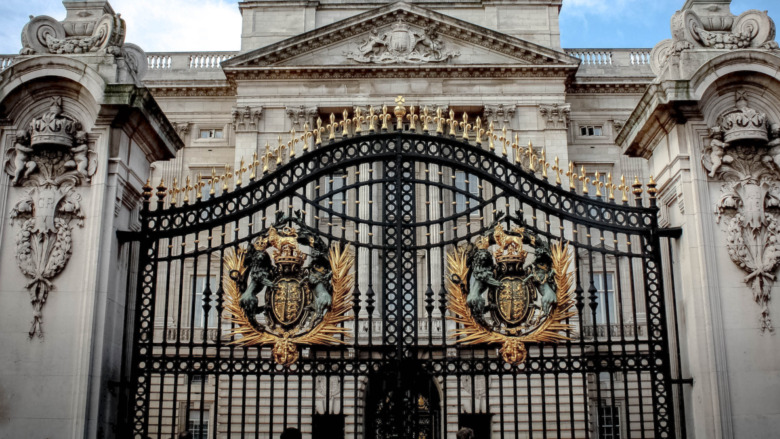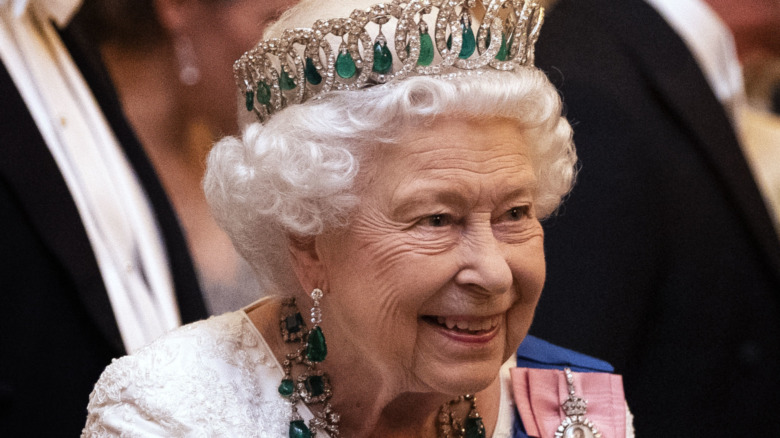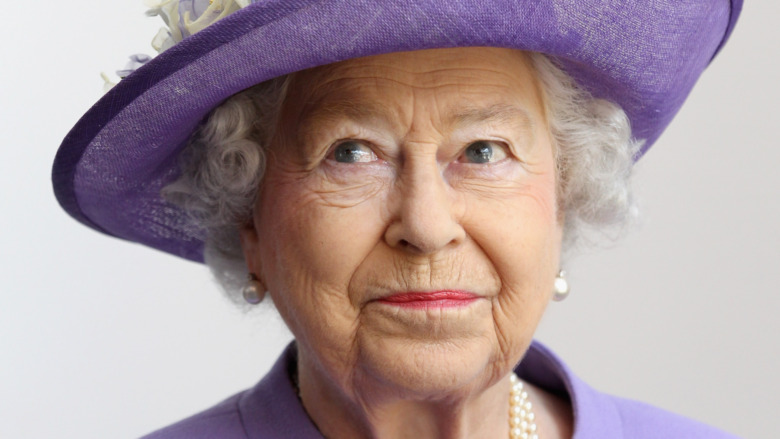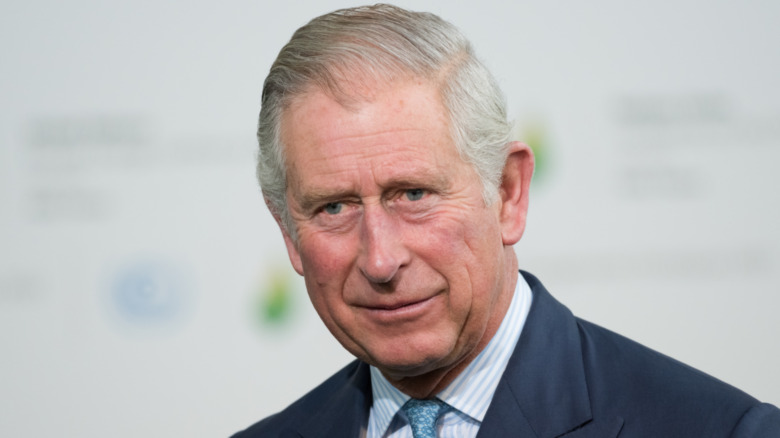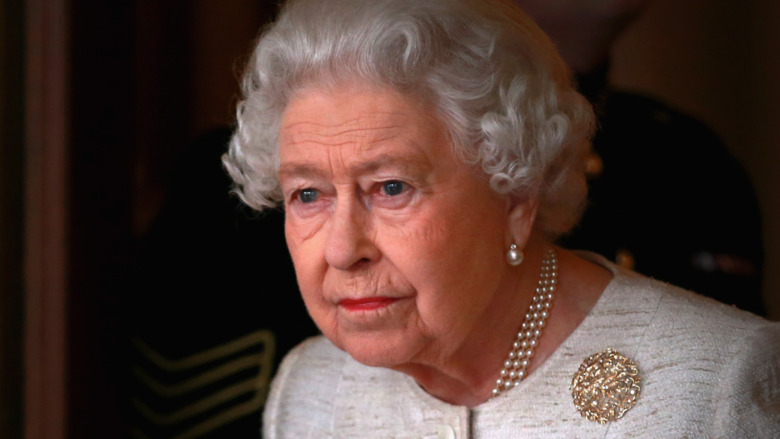What Really Happens When Queen Elizabeth Dies?
When the person at the top of the government of one of the world's most powerful and influential countries dies, it's obviously a big deal, but when a monarch dies, that's an even more monumental event. Because of the pomp, grandeur, ceremony, and the tradition that defined this king or queen, regardless of if they were an active ruler or figurehead while among the living, the events surrounding their death are similarly carried out with intricate precision and staggering detail.
When Queen Elizabeth II dies, the government, media, and population of the United Kingdom (and in the rest of the once-massive British empire) will follow a number of protocols used to properly process and handle the death of a woman who has sat on the throne and worn the crown for about seven decades. That makes her one of the most famous people in history, and her death will appropriately rock the world for a few days. Here's everything that will happen upon the eventuality of the death of Queen Elizabeth II.
Everything has been planned out well in advance
The death of a member of the British royal family (the one whose powers are largely traditional and ceremonial over the constituent United Kingdom nations of England, Wales, Scotland, and Northern Ireland) is such a massive event, and commemorating it is a major, multi-faceted undertaking that involves most every sector of the public realm and a few parts of the private one, too. A royal doesn't die very often, but when one is old or powerful enough that planning for the occasion seems prudent, the many protocols and to-do list items to be carried out when it happens get their own umbrella title for easy and coded reference.
For example, when King George VI died in 1952, his death aftermath was known as "Hyde Park Corner." When his wife, Elizabeth (and Queen Elizabeth II) the Queen Mother died in 2002, the tasks fell under the purview of "Tay Bridge," per The Guardian. The execution of every last bit of the U.K. dealing with Queen Elizabeth II's death is all part of a plan called "Operation London Bridge." According to The Independent, the project has been in the works since the 1960s. And when the cryptic and ominous word goes out that "London Bridge is down," that means the Queen is dead, and "Operation London Bridge" goes up.
Important government people find out first
Following the physical act of life leaving Queen Elizabeth II's body and after confirmation of death from her physician, the first and only person told immediately after, according to British Heritage, is Her Majesty's private secretary. As of 2017, that individual is the Rt. Hon. Edward Young, who has served in the royal household since 2004, according to the royal family's website. Young is the official "channel of communication between the Head of State," meaning the Queen, "and the Government," meaning the democratically elected house of the United Kingdom's Parliament.
Among Young's duties as a liaison will be his final one: informing the prime minister of the Queen's death, according to The Guardian. Via a secure phone line, Young will contact the prime minister and say the words "London Bridge is down." Then, the news goes out to the highest branches of government in each of the 15 countries where the Queen is the ruling monarch and the 36 member states of the British Commonwealth, where Elizabeth maintains a more ceremonial and historic figurehead position. The information goes out of the Global Response Centre, part of the U.K. government's Foreign Office, which is located at a secret facility somewhere in London.
The public is informed with a posted palace notice
The fact that Queen Elizabeth II has died may remain secret, or on a need-to-know basis for several hours, until prime ministers, governors-general, and top-ranking government officials around the world are properly informed first. For example, when King George VI died in 1952, the BBC was not able to report it for nearly four hours, according to The Guardian.
Before the public finds out, staff at the official royal residence and workplace of Buckingham Palace learn of the Queen's death, and on their left arms, they place an item of mourning clothing: a black armband measuring 3.25 inches wide, according to British Heritage. Then a member of the staff — a footman — dressed in full black mourning garb, will quietly make the first step toward informing the world, by emerging from the castle and pinning a simple, written notice of death (printed on black-edged paper) onto the gates of Buckingham Palace.
The media will go all-Queen, all the time
As the footman informs the people of London about the Queen's death in an extremely analog way, the Buckingham Palace website will announce the death digitally. According to The Guardian, the site will temporarily go down, replaced with a single, static page consisting of a dark background bearing the same text written on the notice pinned to the palace gates.
Almost simultaneously, according to The Independent, news agencies, such as the Press Association and the BBC, the U.K.'s state media outlet, will be informed. The BBC's many channels will then immediately break into programming and simulcast BBC One's news coverage. According to The Guardian, newsreaders will wear a fully black wardrobe as they divulge the specifics of the death of the Queen over the next several days, along with multiple films, documentaries, and retrospectives already produced and prepared and ready to air. Other private news organizations, such as Sky News and ITN, have already signed royal experts to offer exclusive commentary. But in the immediate moments after news of the death goes live, networks will mostly display an image of the Queen and play the U.K.'s national anthem, according to The Daily Mail.
Radio stations will learn the Queen is dead in a unique way
British radio has its own system in place, according to The Guardian. State-operated BBC stations are outfitted with the "radio alert transmission system," or RATS, a Cold War-era communications operation so secure that it could supposedly survive a concerted attack on the U.K.'s infrastructure. As the Queen has been on the throne since 1952, the early days of the Cold War, her death will provide the first real usage for RATS. On-air personalities will be told that the Queen has died via a flashing blue studio light. That signals the DJ to immediately switch to one of two pre-approved, pre-selected playlists of proper and appropriate sad music, code-named "Mood 1" and "Mood 2." The blue light is more than just an indication to switch to somber jams; it's a "standby" message, letting the DJ know that they're about to drop the music entirely and move over to news coverage.
Before long, every major media outlet in the world — TV, radio, and online-based — will report (and continue to report) the news that Elizabeth has died. Even some people in a media dead zone will find out quickly: Pilots are authorized to announce the news via mid-flight announcement.
There will be a brand new king
As Queen Elizabeth ascended to power upon the death of her father, so too shall her first-born succeed her as monarch. That's Prince Charles. He'll choose a regnal name, which British Heritage says will be King Charles III.
The Accession Council will meet in St. James Palace on the day after the day that Queen Elizabeth II died, according to The Guardian. This period of time allows Charles' siblings to gather near him and ceremoniously kiss his hand, thus acknowledging his new role as monarch. At the meeting of the Council (which consists of 670 members but only about 150 will attend), the clerk will announce the death of the Queen and proclaim Charles the king, and he will take an oath swearing to protect the United Kingdom. Then official royal trumpeters will emerge outside, play three quick blasts, and the Garter King of Arms will proclaim the new King, for onlookers and the world media. After that, the Garter King of Arms and a few other heralds head to Trafalgar Square, the official middle of London, and read out the proclamations once more, followed by a 41-gun salute in Hyde Park.
This is also the period in which Prince William will likely inherit his father's old title of the Prince of Wales, according to The Independent. And while Prince Charles will now officially be King Charles III, he may not be coronated until months later.
The Queen will lie in state, and then there's a funeral
After the world learns that Queen Elizabeth II has died, millions can publicly process the death via a prolonged period of mourning. According to Town and Country, the U.K. government will drop government flags to half-mast (with British-affiliated countries around the world doing the same) and offering condolence books in U.K. embassies around the world.
If she didn't perish on the grounds of her home, Buckingham Palace, Queen Elizabeth's body will be sent there, according to The Independent. It will rest in the palace's throne room with four Grenadier Guards standing watch, per The Guardian. Four days later, the deceased Queen is transported via a slow, military procession to Westminster Hall, where she will lie in state for four days, allowing the public to say goodbye in person.
While some sources say the Queen's official state funeral will occur 12 days after her death, others (such as The Guardian) say it will happen on the ninth day after she breathes her last breath. The stock market and many stores will not open and soccer stadiums may allow mass public memorial services in conjunction with the funeral. The body of the Queen will then make the journey of a few hundred meters from Westminster Hall to Westminster Abbey, arriving at precisely 11 a.m. for a national moment of silence. The funeral will be presided over by the Archbishop of Canterbury, and afterward, the Queen will be buried, likely at St. George's Chapel at Windsor Castle.

